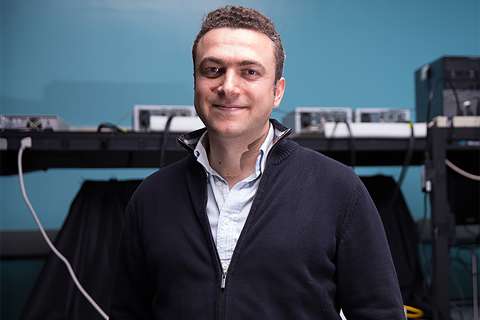Victor Marder, a UCLA scientist and recognized leader in the field of hematology research, died January 29 at his home in Los Angeles, California, after a long battle with myelofibrosis complicated by acute leukemia. He was 80.
Marder was a UCLA professor of medicine and member of the UCLA Jonsson Comprehensive Cancer Center, where he was seeking to develop effective treatments for acute stroke. At the time of his passing, he was working on a therapy with the potential to dissolve clots without the risk of bleeding complications.
The author of numerous books and articles, Marder is best known for his textbook series “Hemostatis and Thrombosis.” A consummate academician, he published extensively in this research area and founded several working groups within the dominant hematologic societies. He was responsible for training many individuals who went on to become leaders in their field.
Marder was born and raised in the Baltimore area and served as Chief of the Division of Hematology at the University of Rochester School of Medicine and Strong Memorial Hospital. During his tenure, he built an outstanding group that earned international recognition in hemostasis and thrombosis research. He also played a critical role in the development of major research journals and educational programs in his area of expertise.
Over his career, Marder was one of the giants in the field of thrombosis and hemostasis. His work in the field of thrombolysis was pace-setting and was both basic biochemistry that elucidated the mechanisms of clot lysis and clinical in the development of therapeutics that were used in the treatment of heart attacks and strokes.
Marder served as director of the Vascular Medicine Program at Los Angeles Orthopaedic Hospital at UCLA from 1999 until 2014. Over the course of his 15-year tenure, Marder showed the same strength, tenacity and wisdom that marked his entire academic career.
He founded of the International Society on Thrombosis and Haemostasis (writing the bylaws that continue to form the basis for our governance as a society) and helped drive the transformation the Scientific and Standardization Committee into the international society that is today recognized as the premier scientific organization in the field.
Marder was a member of the ISTH governing Council from 1980-1988 and chaired the Council from 1988-1990. He was Chair of the Scientific Program for the Philadelphia Congress in 1975 and was President of the 17th Congress of the ISTH that was held in Washington, DC in 1999. He was also active in the American Society of Hematology, chairing the Subcommittee on Thrombosis from 1988-1989. He was on the Educational Program in 1976, 1979, 1982 and 1986 and was a member of the Publications Committee from 1985 to 1988.
In 2013 Marder was diagnosed with myelofibrosis, a serious bone marrow disorder that disrupts normal production of blood cells. Despite this, his wife said a recently licensed drug allowed Marder to bounce back and remain active and vibrant to continue his groundbreaking work in hematology research. However, during the last few months, Marder faced more and more serious health challenges.
He leaves behind his wife Diane of 46 years, two daughters Malerie Marder and Dr. Carrie Marder, and two grandchildren, Esme and Hugo Hyatt.



